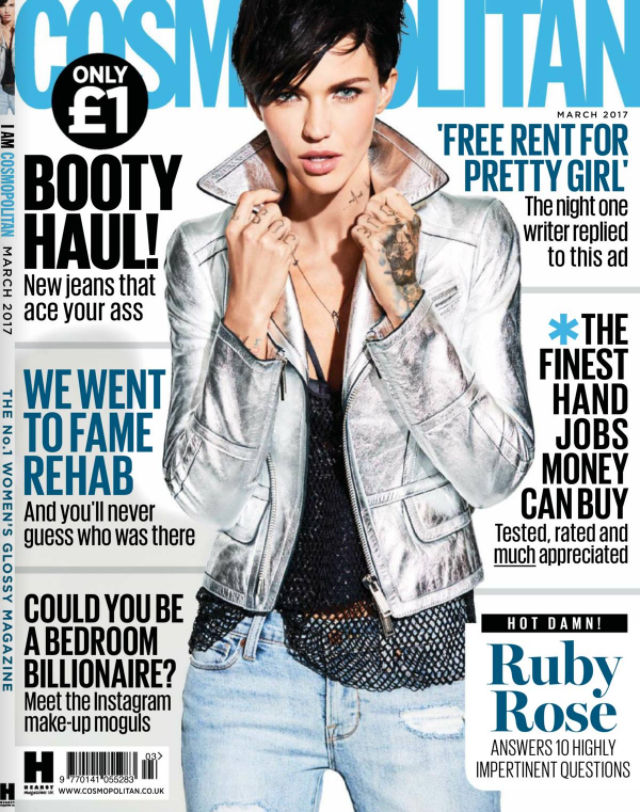 Magazines / Cosmopolitan Representation
Magazines / Cosmopolitan Representation




Look at this front cover and analyse how women are represented and how this representation has been constructed.
The blue and white colour palette used for the cover lines help to support the image of coolness. Blue is commonly seen as a masculine colour and so using it for this particular cover star could be to highlight how she subverts traditional ideas of gender and links to her semi-androgynous look.
Many of the cover lines focus on body image reminding readers that they could and should look better and also that they will be judged on their appearance.
The pose used by the cover star, Rose, where she is pulling her collar up is her way of telling the audience she is stylish and doesn’t care what others think. This is a common pose for celebrities such as Kanye West so she may be trying to emulate his toughness. This is furthered by her proliferation of tattoos on display.

Jeans and a leather jacket are more practical than frilly dresses and less sexual than swimwear and lingerie so by dressing Rose in these clothes, the producers are reminding readers that clothing is a personal choice. They shouldn’t feel they have to dress a certain way to fit a stereotype.
Rose subverts the typical representation of beauty in this image, appealing to the target audience in a different way, showing how it’s OK to be different. She is still very attractive and her apparent disinterest in fitting a stereotype means she will still be appealing to many of the target audience.
The obvious innuendo suggests readers are sexually knowledgeable and active, and the reference to money indicates that anything can be bought in today’s society – even sex.